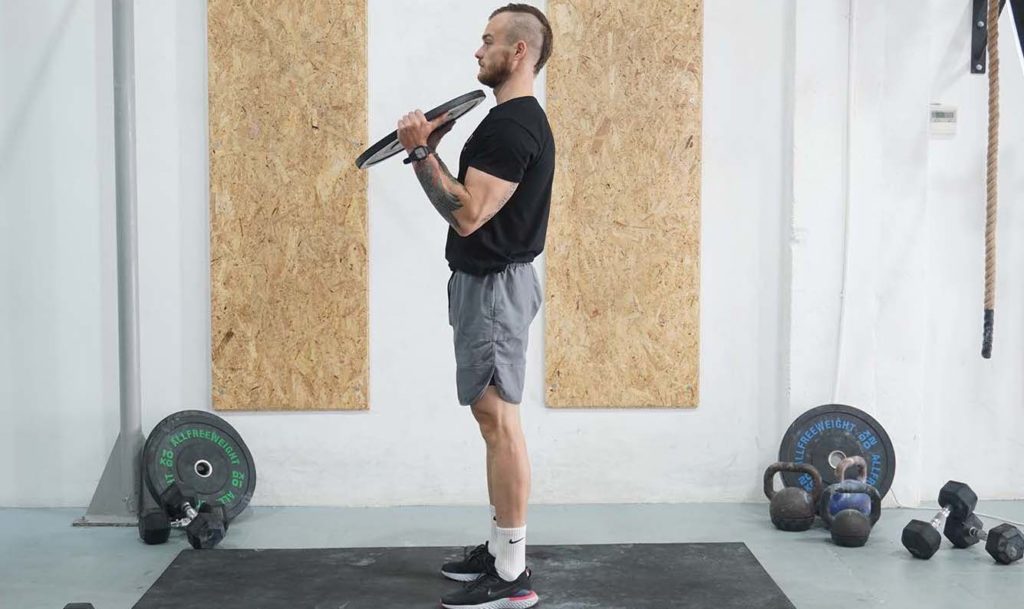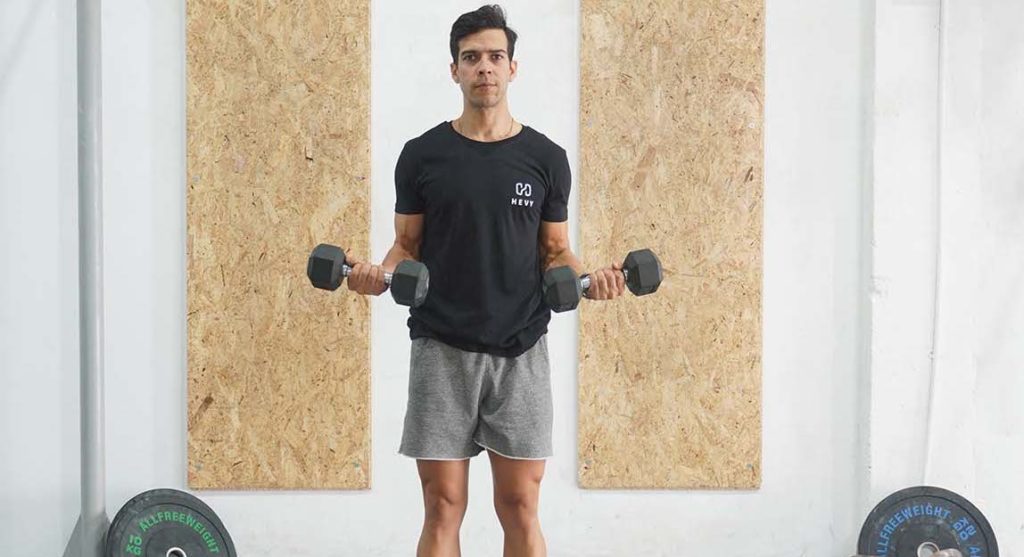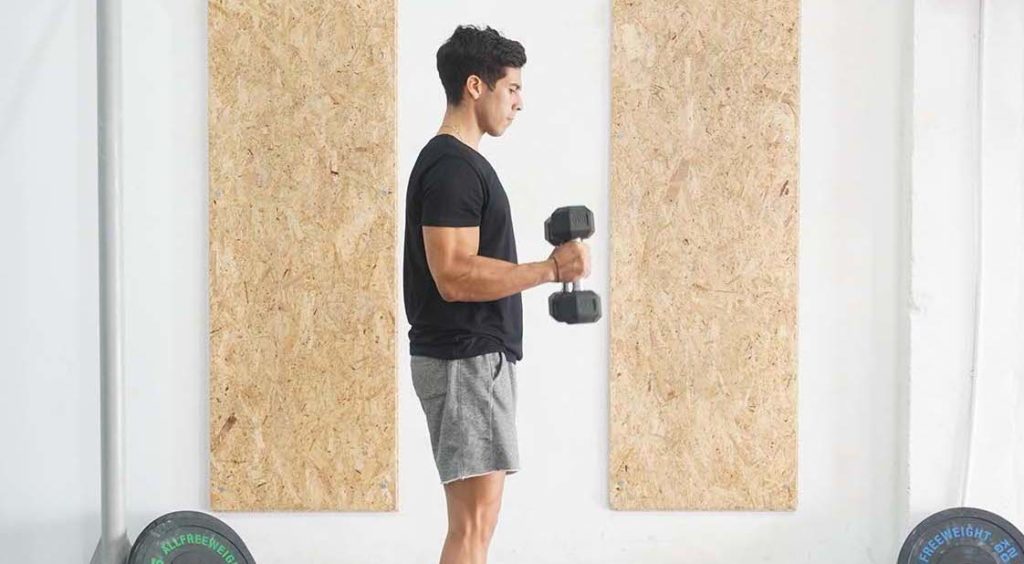The Benefits of Plate Curls
Plate curls are an incredibly versatile but overlooked exercise for training your biceps with minimal equipment. Unlike most other activities, plate curls come in various configurations, providing you with different options for pumping your biceps depending on your mood and what plates you have available.
A notable benefit of plate curls is that you can pick from several variations. The primary way to perform these curls is to hold a heavier plate by its sides and curl. But, you can also use two or more plates, perform concentration curls, and even have your fingers and palm flat against the plate for better forearm activation.
Another significant benefit of plate curls is training in various repetition ranges and utilizing different loads. For instance, classic plate curls are suited for heavier training and typically involve a 45 or 55-lb weight plate for superior biceps overload. Alternatively, you can train with lighter plates and perform more repetitions for metabolic stress, promoting muscle growth.
The third benefit of plate curls is that you can take full advantage of the many variations at home with minimal equipment.
You can leverage plate curls in various ways. One option is to pick a heavier plate and perform a few challenging sets after training your back. Alternatively, choose a lighter plate and do more repetitions to pump your biceps and cause metabolic stress near the end of your workouts. The third option is to pair plate curls with another exercise in a superset fashion. Do one movement and immediately grab a plate, doing as many repetitions as possible. The last option works great for people with limited time because it allows them to accumulate enough training volume in less time.
Level of Exercise: Beginner
How to do Plate Curls

- Take a weight plate and grab it by its sides.
- Position the plate in front of your hips with the bottom against your thighs.
- Bring your shoulder blades back, engage your abs, and take a breath.
- Curl the plate by bending your elbows.
- Lift the plate until your wrists are slightly higher than your elbows and hold the top position for a moment.
- Lower the plate slowly, exhaling on the way down. Extend your arms fully before initiating the next rep.
- Take another breath and repeat.
Alternatively:
- Take a smaller weight plate and place it flat against the fingers and palm of one hand. Position the thumb of the same hand over the top for an extra secure grip.
- Bring your arm to your side, retract your shoulder blades, and engage your abs.
- Take a breath and curl the plate while keeping your wrist straight.
- Curl the weight until your wrist is slightly higher than your elbow, pause for a moment, and extend your arm fully. Exhale on the way down.
- Take another breath and repeat.
- Once finished, grab the plate with your other hand and repeat for the same number of reps.
What muscles do plate curls activate?
The primary muscles that work during plate curls are the biceps, which cover the front of our upper arms. Their primary functions are elbow flexion (bending the arm) and wrist supination (rotating your wrists) (1). Our biceps engage as we curl the plate, peak at the top, and continue to work as we extend our arms on the way down.
Similarly, the brachialis muscle plays a vital role in plate curls. The muscle is also situated on the front of our upper arms and contributes to elbow flexion (2). You cannot see the brachialis underneath the biceps, but it contributes to upper arm size.
Your forearms are also involved in plate curls, but their activation depends on the variation you’re performing. For instance, holding a single plate with your palms neutral activates the brachioradialis––a muscle that spans from your elbow to the wrist, covering the top of your forearm (3). You also achieve significant forearm activation when holding a single plate flat against your palm and fingers because it takes effort to keep the weight in such a position. But, holding a plate by one of its openings requires less effort and allows you to emphasize your biceps and brachialis.
The midsection musculature also plays a role during plate curls. For instance, holding a heavy plate in front of yourself and curling it requires good stability, so your abs, obliques, erector spinae, and other muscles flex isometrically to promote torso stability.
Expert Tips on how to Properly Perform Plate Curls
Our first tip for effective plate curls is to start with a lighter weight, even if you want to train both arms simultaneously. The movement is straightforward, but curling plates differ slightly from lifting dumbbells and bars. Going too heavy right from the start can make it challenging to maintain proper form and activate your biceps effectively. We recommend picking a weight that allows you to perform at least 12 to 15 smooth and controlled repetitions.
The following recommendation for plate curls is to experiment with the variations and see what you enjoy most. Many trainees stick with the classic plate curl, where they train both arms simultaneously, but you don’t have to limit yourself. Try the single-arm plate curl, concentration plate curls, and even preacher plate curls. What matters most is that you enjoy the movement and can activate your biceps well on each repetition.
Our third tip is to engage your entire body and maintain a solid position while curling. Doing so is vital for staying safe, avoiding potential injuries, and lifting heavier weights effectively. You can achieve whole-body rigidity by taking deep breaths between repetitions, engaging your abs, and squeezing your glutes before starting a set.

We also recommend keeping your elbows as steady as possible throughout each set, regardless of the variation you’re performing. Your elbows should be at your sides from start to finish, ensuring that you’re training your biceps through a full range of motion. Having your elbows move forward and back as you lift and lower the weight would prevent you from effectively stretching and contracting your muscles, leading to poor training results.
The final tip is something you’ve likely heard for other exercises, but it is worth discussing. You must learn to engage your biceps and feel them work from start to finish. Be conscious of the muscles you’re training by squeezing them hard at the top position and keeping them engaged as your arms extend on the way down. Doing so might not seem all that important, but establishing a solid mind-muscle connection can promote better results in the long run.
Variations and Modifications of the Plate Curls
1. Double Plate Curl
Double plate curls are a variation you perform by holding a pair of smaller plates with one hand. A notable benefit of the variation is that you can overload your muscles by increasing the load steadily. For instance, if the 5-lb plate feels too light, but you’re having trouble curling a 10-lb one, you can grab a 5 and a 2.5-lb plate to work with a load you can handle. Holding two plates also leads to better forearm activation, promoting balanced arm development.
2. Plate Preacher Curl
Preacher curls are another variation for developing the biceps. Using plates during preacher curls lets you load your biceps and prevents other muscle groups from contributing. One option is to hold a single plate on both sides and do curls. Alternatively, grab a lighter plate with one hand and train one bicep at a time.
3. Concentration Plate Curl
Concentration curls are similar to preacher curls because the objective is to anchor your arms and prevent other muscles from assisting your biceps. But, instead of using a preacher bench, you must sit on a gym bench or chair and place your upper arm against the inner thigh. Curling a small plate or two from the position allows you to concentrate on your biceps and improve your mind-muscle connection.
Mistakes to Avoid
Going Too Heavy
Lifting too much weight is a common mistake with plate curls that makes the movement less effective and leads to poor biceps activation. The reason is that lifting a plate you cannot handle forces you to swing your body and use momentum, taking the tension away from the working muscles. Avoid the error by starting with a light plate that allows you to do at least 12 smooth and controlled repetitions where you feel your biceps activating. Increase the resistance gradually but be mindful of your technique and reduce the load if you notice that you’re beginning to use compensatory tactics to complete your sets.
Shortening The Range of Motion
Shortening the range of motion is another common error that can make plate curls less effective. One reason for the mistake is using too much weight, which prevents you from extending your arms completely and curling the plate to the top position. Another reason is that the weight plate might hit your upper thighs on the way down, preventing you from extending your arms. An excellent way to avoid the error is to bend slightly at the waist while keeping your back neutral and midsection braced. Doing so will create extra room, leading to better technique. Alternatively, perform single-arm plate curls.
Restricting Yourself To a Single Variation
The third common mistake with plate curls is sticking to a single variation and never exploring other movements. Doing so isn’t necessarily a training mistake, but it’s still something to avoid because it can lead to poor results in the long run. Repeating the same movement can get stale, leading to a loss of motivation and less effort during training. Each exercise stimulates your muscles uniquely, and switching things up can lead to more balanced development.
Similar Exercises to the Plate Curls
Bicep Curl (Dumbbell)

Dumbbell curls are among the most popular exercises for bicep growth and strength gain (4). The movement is similar to plate curls because you can adjust the resistance as you see fit, the range of motion is identical, and you can pick from several variations. One of the best ways to perform dumbbell curls is to grab a pair of weights, stand tall, and curl.
Hammer Curl (Dumbbell)

Dumbbell hammer curls are another fantastic movement that shares similarities to plate curls. The objective is to curl dumbbells while keeping your wrists neutral (palms facing one another), which resembles plate curls where you hold a single weight by its sides. Doing so is beneficial for engaging your biceps and promoting brachioradialis activation.
Bicep Curl (Cable)
Cable bicep curls are also a great exercise to add to your arsenal. Performing curls on a cable station is helpful because of the constant tension that can lead to better muscle activation. Aside from that, cable curls are identical to dumbbell and plate curls in most other ways.

